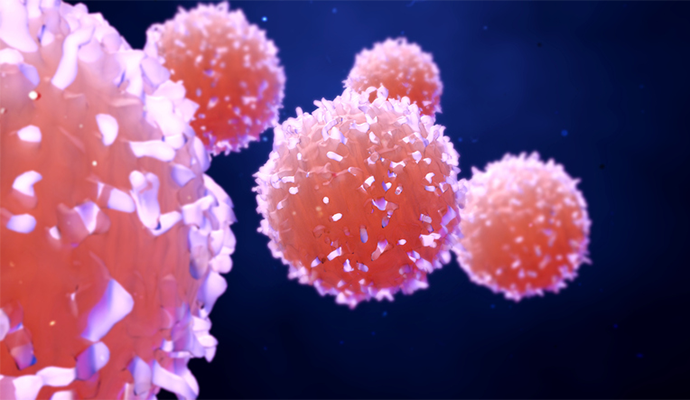Precision Medicine for COVID-19 Shows Promise, Needs Improvement
Using precision medicine for COVID-19 will require new taxonomy and a better system for subtype classification in order to be effective, experts say.

Source: Getty Images
- In a recent opinion piece published in JAMA Network, experts explored the use of precision medicine in treating COVID-19 and identified a potential pathway for defining COVID-19 subtypes. The authors suggested that new taxonomy along with streamlined subtype criteria could pave the way for precision medicine to be useful in treating COVID-19.
“A taxonomic revolution is occurring in medicine,” the article stated. Whether they are referred to as phenotypes, subtypes, or endotypes, “these patient groups can share symptoms, biology, or prognosis and are proposed as the basis for precision care.”
The article’s supplemental data showed a steady increase in proposed COVID-19 subtypes, with more than 60 proposed in the past year.
But as the authors pointed out, COVID-19 arises from a pathogen that is constantly evolving. Different variants mean different health considerations, and both the host and the pathogen require thorough examination before grouping patients together.
"Some form of pathogen subclassification seems useful and probably necessary at least to understand disease spread, course, and prognosis. Notably, however, their relationships to vaccine-induced immunity, host response, immunopathology, and response to COVID-19 therapies are less clear,” the authors explained.
READ MORE: Prostate Cancer Foundation Launches Precision Medicine Initiative
Due to a variety of external factors, host responses to the virus can vary drastically. Overall immune system health and comorbidities have a major impact on health outcomes in the case of COVID-19. Being that a unique combination of pre-existing conditions can lead to extremely different health outcomes for each patient, it is difficult to identify meaningful subtypes that can actually be useful in precision medicine.
In order to pin down useful subtypes, the authors asked: “could there be a ‘living’ COVID-19 taxonomy?” They proposed that an independent organization could set standardized rules and metrics for evaluating potential subtypes.
“Such cataloging of COVID-19 variants already occurs for genomic surveillance,” the article explained. “A clearinghouse and review of meaningful subtypes could be administered by the World Health Organization, International Severe Acute Respiratory and Emerging Infection Consortium (ISARIC), or others, to reduce the anarchy of competitive lumping and splitting.”
Because the current system for identifying subtypes is disorganized, the authors have identified five essential criteria that could be used to define COVID-19 subtypes. Their vision is that a new COVID-19 taxonomy could help to promote the five criteria.
The first criterion is biological plausibility, which relies on the idea that “a biological mechanism should underlie proposed subtypes, although biological plausibility depends on currently available knowledge.”
READ MORE: Implementing a Precision Medicine Strategy to Improve Cancer Care
Because plausibility is difficult to pinpoint with a virus that is constantly changing, the authors acknowledge that it can at the very least serve as a starting point for determining whether potential subtypes warrant further investigation.
Secondly, the subtype must be promptly identifiable, meaning that all data, test results, and measurements should be collected in order to grasp the potential scalability of the subtype. The third criterion points out that subtype proposals should be nonsynonymous, and that there should be no subtype overlap between patients.
The fourth criterion proposed by the authors requires the subtypes to be reproducible.
“Subtypes should be reproducible in similar patients derived from separate data sets,” the article explained. “They may even be generalizable across regions or sparseness of data. These analyses could be promoted through a COVID-19 taxonomy and the shared common data model.”
Finally, the authors suggested that the subtype be treatment-responsive—this step is crucial in determining a subtype’s usefulness in precision medicine. Through studies and randomized trials, researchers can test subtype treatment effectiveness and create new treatments that are catered toward patients who fall under this subtype.
READ MORE: Precision Medicine Therapy Restores Immune Function in Children
While the authors offered a clear and concise methodology for determining subtypes, they acknowledged that putting it into practice is no easy task. Additionally, as COVID-19 continues to mutate and spread at a fast pace, precision medicine will only prove useful if researchers can make extremely quick developments.
Outside of COVID-19, precision medicine has shown to be promising for a variety of other conditions. In a recent study, researchers developed the Human Salivary Proteome Wiki, which enables them to examine saliva samples for signs of harmful pathogens. This analysis could play a crucial role in precision medicine.
Meanwhile, more healthcare organizations are investing in precision medicine as a tool to treat cancer. In late May, the Prostate Cancer Foundation launched the Drew Foundation Precision Oncology Center of Excellence, which will provide precision medicine treatments to Veterans with prostate cancer.
Precision medicine shows promise, but researchers are skeptical that new treatment developments can keep up with the ever-changing nature of COVID-19. An effective precision medicine approach for the virus and its variants would require both standardization and speed.
